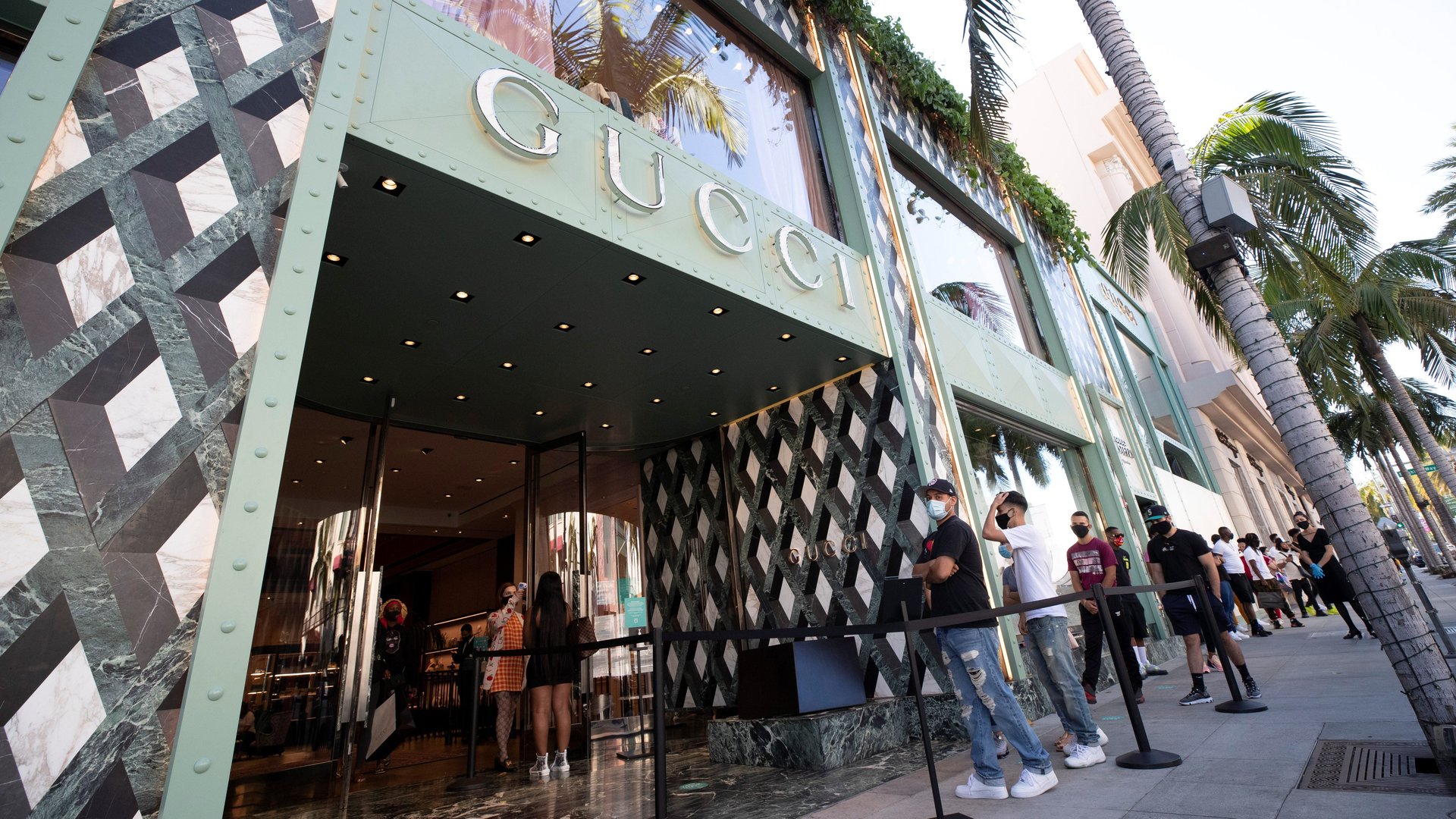The latest trend in luxury shopping: buying in your home country
Western Europe has long been one of the world’s top spots for luxury shopping, and not just for Europeans. Tourists from the US and around Asia—once mostly from Japan, but more recently predominately from China—were responsible for a large share of the region’s sales, in part because prices for French and Italian luxury brands were much better in Europe.


Western Europe has long been one of the world’s top spots for luxury shopping, and not just for Europeans. Tourists from the US and around Asia—once mostly from Japan, but more recently predominately from China—were responsible for a large share of the region’s sales, in part because prices for French and Italian luxury brands were much better in Europe.
But as Covid-19 wiped out tourism to the area, particularly the long-haul sort where travelers come from far afield, it has prompted more shoppers to do their luxury buying closer to home.
At Gucci, which saw a big dip in the first half of the year, sales jumped 44% in North America this quarter compared to 2019, parent company Kering reported yesterday (pdf). At Saint Laurent, another Kering brand, sales in the region rose 32%. On a call with investors and analysts, the group’s CFO, Jean-Marc Duplaix, highlighted a number of factors but said first among them was a “repatriation of demand, especially from wealthy American tourists.”
Kering’s sales in Asia, meanwhile, got back to growth with the help of Chinese shoppers buying more goods in China. Total sales for the whole group still fell 4%, in part because Gucci—its biggest brand—gets a lot of sales from travel retail and the domestic purchases weren’t enough to make up for the tourist business effectively disappearing.
Hermès, on the other hand, actually saw its total sales return to growth, it said yesterday (pdf). The big driver was Asia, where sales increased 21%, driven by more Chinese shoppers making domestic purchases.
It was a similar story last week for fashion and leather goods at LVMH, owner of brands such as Louis Vuitton and Dior. Though overall sales fell as duty-free retail struggled, the fashion segment grew 12%. On the company’s Oct. 15 earnings call, CFO Jean-Jacques Guiony said without a vaccine for Covid-19, he doesn’t think tourism will get back to normal anytime soon. But in the meantime, there’s more “repatriation” going on, helping to buoy sales.
The repatriation trend isn’t totally new. Similar patterns played out among American and Japanese shoppers over the years. Now Chinese shoppers are the world’s biggest luxury buyers, and after years doing most of their shopping abroad, they’ve more recently started shifting those purchases to China. The government there has pushed the change, and luxury companies have cooperated by reducing their prices, though a few have recently boosted them again. The pandemic has dramatically sped up the move of buying in China.
“That’s something that we have witnessed for the past four, five years, so it was something that we knew was coming,” Guiony said of Chinese nationals buying more in China. “Obviously, we were not expecting this to happen within 2 weeks, which was a little bit extreme.”
This shift, and the ongoing explosion of the country’s middle class, are steadily reshaping the luxury market. In 2019, Europe accounted for more of the world’s luxury purchases than any other region, according to management consultancy Bain & Company and Altagamma, an association of Italian luxury firms. By 2025, they estimate China will be the world’s center of luxury shopping.